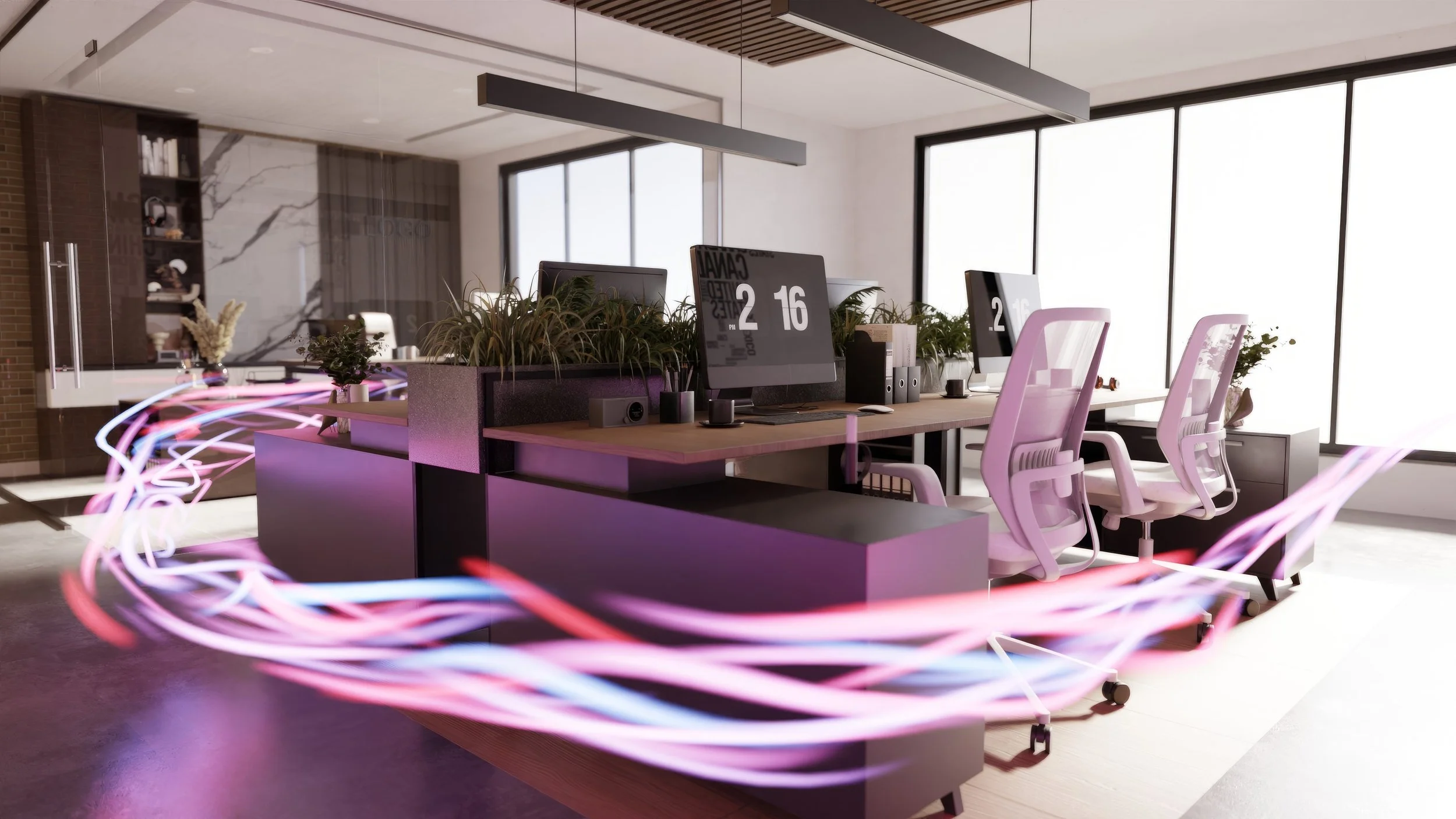Virtual and Smart Workspaces
Abstract:
The modern workplace is undergoing a profound transformation driven by intelligent technologies. From smart desks that adjust to user preferences to immersive virtual offices that replicate physical environments online, organizations are embracing innovation to enhance productivity, employee satisfaction, and operational flexibility. This article explores the components of an intelligent workplace, the technologies enabling it, and how businesses are integrating physical and digital environments to create smarter, more adaptive workspaces.
Keywords:
Intelligent Workplace, Smart Desks, Virtual Offices, Workplace Technology, Hybrid Work, Smart Environment, Employee Experience, Office Automation, Digital Workspaces, Future of Work
Introduction:
As the boundaries between physical and digital work environments continue to blur, companies are reimagining what the workplace can be. The intelligent workplace goes beyond connectivity—it uses smart technologies to optimize comfort, productivity, and collaboration. From ergonomic desk setups that adapt automatically to AI-powered systems that manage lighting, air quality, and meeting spaces, these innovations are reshaping how and where work happens. This article explores how the intelligent workplace is designed, implemented, and experienced.
1. Smart Desks and Personalized Workstations
At the core of the intelligent office is the smart desk—an adaptive workstation that remembers individual preferences and supports health and productivity. These desks can automatically adjust height based on user profiles, prompt movement throughout the day, and integrate biometric feedback to improve ergonomics. Connected to workplace systems, they can suggest focus times, adjust lighting based on tasks, or book a meeting space. These workstations are transforming static offices into dynamic, responsive environments that adapt to users instead of the other way around.
2. Integrating Sensors and Environmental Intelligence
Intelligent offices use IoT sensors to collect data on temperature, occupancy, air quality, and lighting. These inputs are used to automate environmental conditions, reducing energy waste while enhancing comfort. For example, smart HVAC systems adjust airflow based on how many people are in a room. Sensors detect when a space is underused and recommend repurposing. Real-time analytics also helps facility managers make decisions about space usage, resource allocation, and environmental sustainability. The result is a workplace that is not only smarter but also more cost-effective and environmentally responsible.
3. Virtual Offices and the Digital Twin Experience
Virtual offices are extending the workplace beyond the physical. These environments replicate office layouts in virtual reality or 3D digital platforms, allowing remote teams to collaborate in spaces that feel tangible. Employees can meet in virtual lounges, share whiteboard ideas in digital rooms, or engage in spontaneous conversations just like in a physical office. Combined with avatars, spatial audio, and immersive design, these environments foster presence, engagement, and a shared culture—even across distributed teams. For many, virtual offices are becoming the new norm for remote collaboration.
4. AI-Driven Workplace Assistants and Automation
AI plays a major role in intelligent workplace design. From digital assistants that schedule meetings to systems that analyze how teams collaborate, AI helps streamline workflows and enhance decision-making. Smart office platforms can detect when teams are over-scheduled, suggest optimal work patterns, or highlight areas of collaboration breakdown. AI also supports inclusivity by offering real-time translation, meeting summaries, and accessibility features that level the playing field for all employees. These tools are becoming essential in managing both productivity and well-being.
5. Designing for Hybrid Flexibility and Experience
The intelligent workplace is not confined to one location. It supports hybrid work by providing a seamless experience across physical and digital touchpoints. Employees can transition from a home setup to a hot desk in the office without losing continuity. Smart lockers, contactless access, mobile scheduling apps, and unified communication tools ensure that flexibility doesn’t compromise productivity. Ultimately, the intelligent workplace is designed around people—helping them do their best work, wherever they are.
Conclusion:
The intelligent workplace marks a shift from static, one-size-fits-all offices to responsive environments that empower employees and enhance business outcomes. Through a combination of smart technology, data insights, and thoughtful design, organizations are creating workspaces that adapt to human needs while supporting organizational agility. As innovation continues to evolve, the most successful workplaces will be those that blend the physical and digital into a cohesive, human-centered experience.
Resources:
Microsoft – The Future of the Intelligent Workplace: https://www.microsoft.com/en-us/worklab
Gartner – Smart Workplace Technology Trends: https://www.gartner.com/en/articles/the-smart-workplace
Harvard Business Review – Designing Workspaces for the Hybrid Future: https://hbr.org/2022/09/designing-workspaces-for-the-hybrid-future
Cisco – The Intelligent Workplace Experience: https://www.cisco.com/c/en/us/solutions/collaboration/intelligent-workplace.html
Accenture – Workplace Redesign with Smart Tech: https://www.accenture.com/us-en/insights/future-workplace

